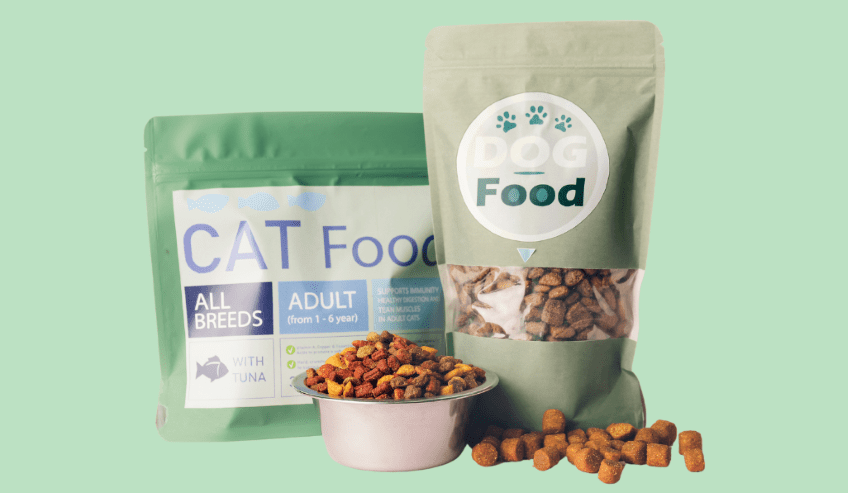In today’s rapid and competitive food market, flexible food packaging is a critical answer for both manufacturers, retailers, and consumers. This does not save only to food because it’s economical, but it also saves the environment reaping benefits of convenience and economy. Flexibility provides a strong impetus from increased environmental consciousness and demand for convenience in packaging of this type, with the global market being quickly drawn to flexible food packaging.
This post examines the advantages, uses and future of flexible food packaging — and what makes it such a smart choice for forward-thinking food businesses today.
What’s Flexible Food Packaging?
Food packaging under pressure may include any package composed from a relatively soft material such as a plastic film, paper or aluminum foil. Flexible packaging can be molded or easily bent without foregoing its protective properties, which is unlike inflexible packaging including glass jars or metal cans.
Some of the common flexible food packages include:
- Snack bags for chips, cookies, and crackers
- Stand-up pouches for sauces, soups, and baby food
- Vacuum-sealed packs for meats and cheeses
- Retort pouches for ready-to-eat meals
It is applied to snack, frozen food, pet food, sauce, dairy products, ready meal, cuisine, medicine, beverage and so on.
Why Flexible Food Packaging is a Game Changer
- Enhanced Food Preservation
Greater shelf life is arguably the single most significant benefit of flexible food packaging. oxygen, moisture, and UV rays, food remains fresh and products can be effectively valved upon request. This is particularly relevant for fresh products, such as meat, cheese and pastries.
It is common for flexible packaging to employ vacuum sealing and/or modified atmosphere packaging (MAP) to further reduce spoilage and keep product fresh.
2. Light and Low-Cost
Lighter compared to hard packaging, which uses less material and energy to produce, flexible food packaging. This translates into large cost savings on transport, storage, and manipulation. This means that for food manufacturers and exporters that are able to receive standardised shipments the cost to move product around the world is reduced, as is the carbon cost.
3. Design That’s Both Customizable and Consumer-Friendly
To the modern consumers the packaging not only has to serve its practical purpose, but it must be aesthetic too. Flexible food packaging prints well, enabling product managers to create visually appealing designs, add plans of nutrition, and promote earth-friendly characteristics.
Other user-friendly features including resealable zippers and easy open tear notches, and spouts dispense are very popular and promotes the popularity of flexible packaging for those with high paced lifestyles.
4. Supports Sustainability Goals
Sustainability is a growing concern in the packaging industry, and flexible food packaging is evolving to meet these demands. Many flexible packaging options now use recyclable, compostable, or biodegradable materials. Additionally, since flexible packaging uses less raw material than rigid alternatives, it generates less waste and consumes fewer resources during production.
Recycling infrastructure for flexible plastics is still developing, but advancements in mono-material packaging (using a single type of recyclable polymer) are making it easier for consumers and facilities to participate in sustainable practices.
5. Convenience for Modern Consumers
Modern lifestyles demand convenience, and flexible packaging delivers. From zip-lock closures and tear notches to microwavable and freezer-safe materials, this packaging type supports on-the-go consumption and simplifies food preparation. Resealable features also allow for portion control and reduce food waste, making flexible packaging a consumer-friendly choice.
Applications in the Food Industry
Bendable packaging is extrmely flexible and can stretch to suit a variety of edible products, including:
- Bakery and Confectionery: Pouches and wrappers for cakes, bread, and candy
- Dairy: Sachets for milk powders, cheese packaging, and yogurt pouches
- Frozen Foods: Vacuum-sealed or film-wrapped items for frozen vegetables, meats, and ready meals
- Beverages: Flexible pouches with spouts for juices, smoothies, and energy drinks
- Pet Food: Resealable pouches and bags designed for freshness and easy storage
Whether it be a can or a bag or a package, flexible food packaging is the most economical, efficient way to preserve, protect and present food.
Challenges and Future Outlook
While flexible food packaging presents numerous benefits, it also faces challenges. Recycling remains a significant issue, particularly with multi-layered films that are difficult to separate. Innovations in packaging design and materials are underway to address this, including the use of mono-material structures and bio-based plastics.
Consumer awareness is also driving change, with more people demanding eco-friendly packaging. In response, food manufacturers and packaging companies are investing in sustainable technologies and closed-loop recycling systems.
Looking forward, the flexible food packaging market is expected to grow steadily, driven by trends in convenience, sustainability, and global food distribution. Smart packaging—integrating QR codes, freshness indicators, and interactive elements—is also gaining traction, offering new ways to engage consumers and ensure product integrity.
Conclusion
Flexible food packaging has revolutionized the way the food industry and the consumers perceive packaging solutions practical, sustainable, and consumer convenience friendly. And when you consider the added benefits of enhanced shelf life, minimal to no waste, less-costly transportation and high visibility branding opportunities, it’s easy to understand why flexible packaging is becoming the packaging of choice for food manufacturers worldwide.
With this emphasis on sustainability and innovation, companies that invest in flexible food packaging now will be poised to address the demands of the future market and create more loyalty from their customers.





